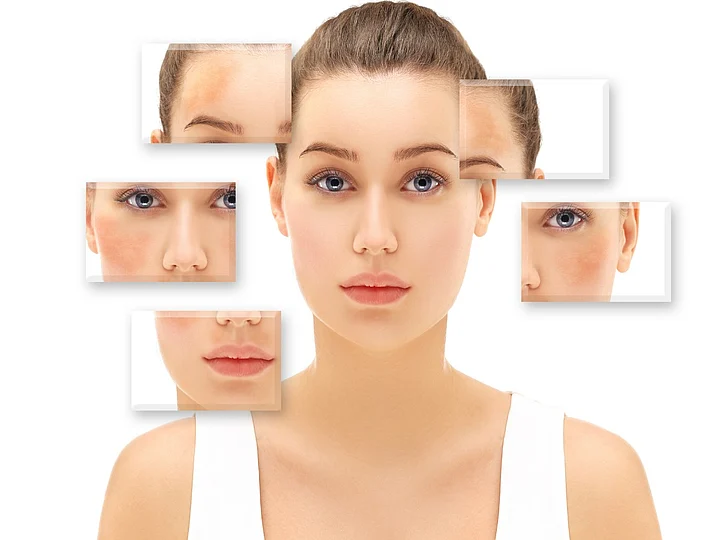Melasma is a common skin disorder characterized by brown, dark brown, or blue-gray patches on the skin. They may be flat or freckle-like spots. Melasma commonly affects the areas of your face, cheeks, upper lip, forehead, and forearms.
Melasma is also known as the “mask of pregnancy” since it frequently affects pregnant women. Melasma darkens and lightens over time, and often gets worse in the summer.
Another lesser-known name for melasma is chloasma. Although this skin disorder is completely harmless, it makes people feel self-conscious. According to PubMed, melasma affects 1.5 to 33% of people. Let's know about the causes, symptoms, diagnosis and treatment of the condition in detail.
Melasma: Types
There are three types of melasma and they differ depending on the depth of the pigment. Many specialists use a wood lamp emitting black light that is used to determine the depth of the pigment.
Epidermal: Epidermal melasma is characterized by a dark brown color, a well-defined border that appears clearly under black light and responds well to treatment.
Dermal: Dermal melasma is characterized by light brown/ bluish color spots with a blurry border that appears no differently under black light and rarely responds to treatment.
Mixed melasma: Mixed melasma is characterized by both bluish and brown patches with a mixed pattern under blacklight and doesn't respond well to treatment.
Melasma: Causes and Risk Factors
The exact cause of melasma is not known yet. It is believed it might be due to the malfunction of the melanocytes in the skin which causes them to produce too much color in certain areas of the body.
Research proves that people with light brown skin to darker skin tones are more likely to suffer from melasma as they have more melanocytes compared to people with lighter skin.
According to the MedicalNewsToday, the risk factors for Melasma are:
Frequent exposure to UV rays triggers melasma flare-ups.
Melasma occurs in people with light brown skin tones.
Melasma is more likely to affect females (about 9 times) more than males.
Melasma is more likely to affect pregnant women (affecting 15% to 50% of pregnant women). Pregnancy hormones might be the reason.
Up to 50% of people suffering from melasma claim that their family members also suffered from the condition.
Melasma: Symptoms
Hyperpigmentation is the primary symptom of melasma. It is characterized by discolored, flat patches of darker skin or uneven skin tone. These patches are often brown or gray in color.
A person suffering from melasma does not experience any other physical symptoms but they find the patches bothersome and it makes them conscious. Melasma patches do not cause any physical pain.
Patches can occur on the face, the upper lips, the bridge of the nose, cheeks, and forehead. A person may rarely have patches on their arms and neck.
Melasma: Diagnosis
Dermatologists confirm the cases of melasma by virtual examination. However, symptoms of melasma can be similar to other skin disorders and that might want a doctor to take a biopsy test to rule out other skin conditions.
In a biopsy, a doctor will remove a very small portion of the skin for testing it in a laboratory. A doctor may also Wood’s light to have a closer look at the skin.
Melasma: Treatment
Melasma treatment may include procedures or medications or a mix of both. Your treatment plan can be a mix of these chemical peels, micro-needling, laser treatment, or platelet-rich plasma (a procedure in which melasma is injected into the skin to even the skin tone).
Then the medications and ointments would be prescribed to even out skin tone or reduce inflammation.
(At The Quint, we question everything. Play an active role in shaping our journalism by becoming a member today.)
